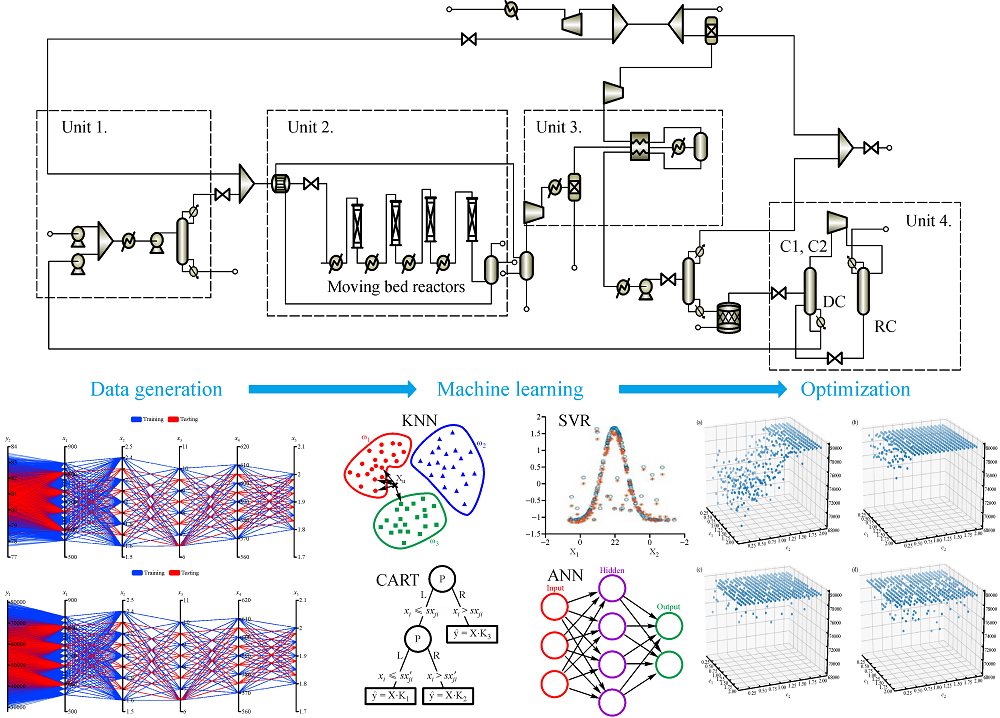Compared to the mechanism-based models, data-driven models presenting the relationship between input variables and output variables as “black boxes” can reduce the complexity. K-nearest neighbors (KNN), support vector machine (SVM), decision tree (DT), and artificial neural network (ANN) are the most commonly-used machine learning algorithms for data-driven models [
10]. KNN is capable of addressing the issues arising from nonlinearity and insufficient training data, and has been applied in different areas such as pattern recognition [
11], data mining [
12], and outlier detection [
13], to improve process operations [
14]. SVM models combined with a genetic algorithm optimizer had been used for controlling production quality [
15] and optimizing equipment structure [
16], especially for minimizing energy consumption up to 43% in carbon fiber industry [
17]. Both DT [
18] and ANN [
19,
20] can predict the output measures very well in pyrolysis reaction networks, but DT is much faster to be trained than ANN, as it is less complicated and can be constructed by practitioners without deep understanding required for training ANN [
21]. However, ANN shows prospective application in the correlations between molecular structures and properties [
22−
24]. Recently, Su et al. [
25] developed innovative architecture of deep neural network combining tree structured long short-term memory network and back-propagation neural network to provide an intelligent tool to predict properties in the design or synthesis of chemical, pharmaceutical, biochemical products and processes. Further, for solving the optimization problems on chemical engineering effectively and efficiently, Schweidtmann et al. [
26] maximized the net power generation in an organic Rankine cycles by deterministic global process optimization based on ANNs, and Chandrasekaran and Tamang [
27] employed ANN and particle swarm optimization (PSO) technique to minimize the machining time in turning of Al-SiCp metal matrix composites. Besides, random forest and genetic algorithm were integrated to optimize the operating conditions of chocolate chip cookie production [
28].











